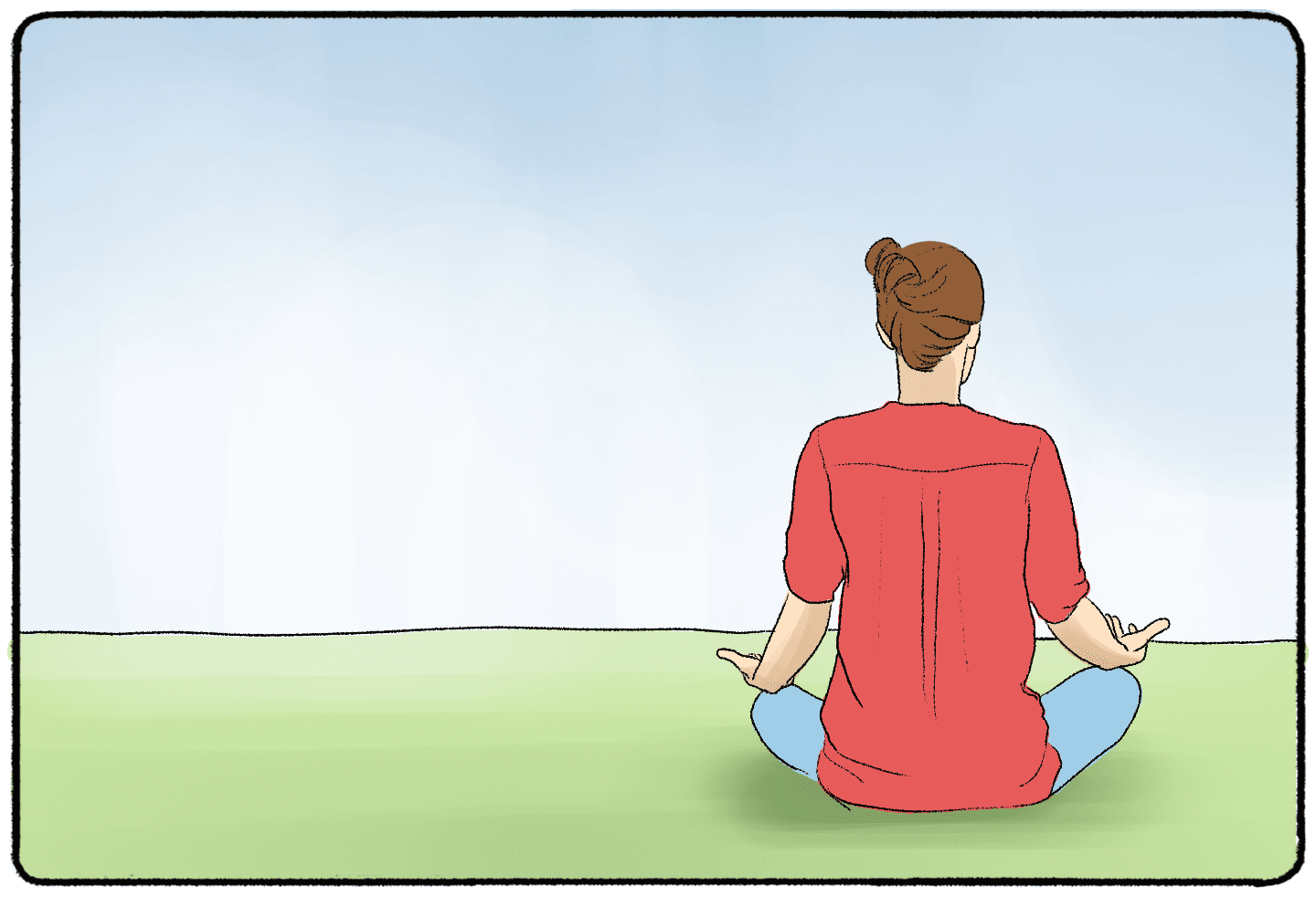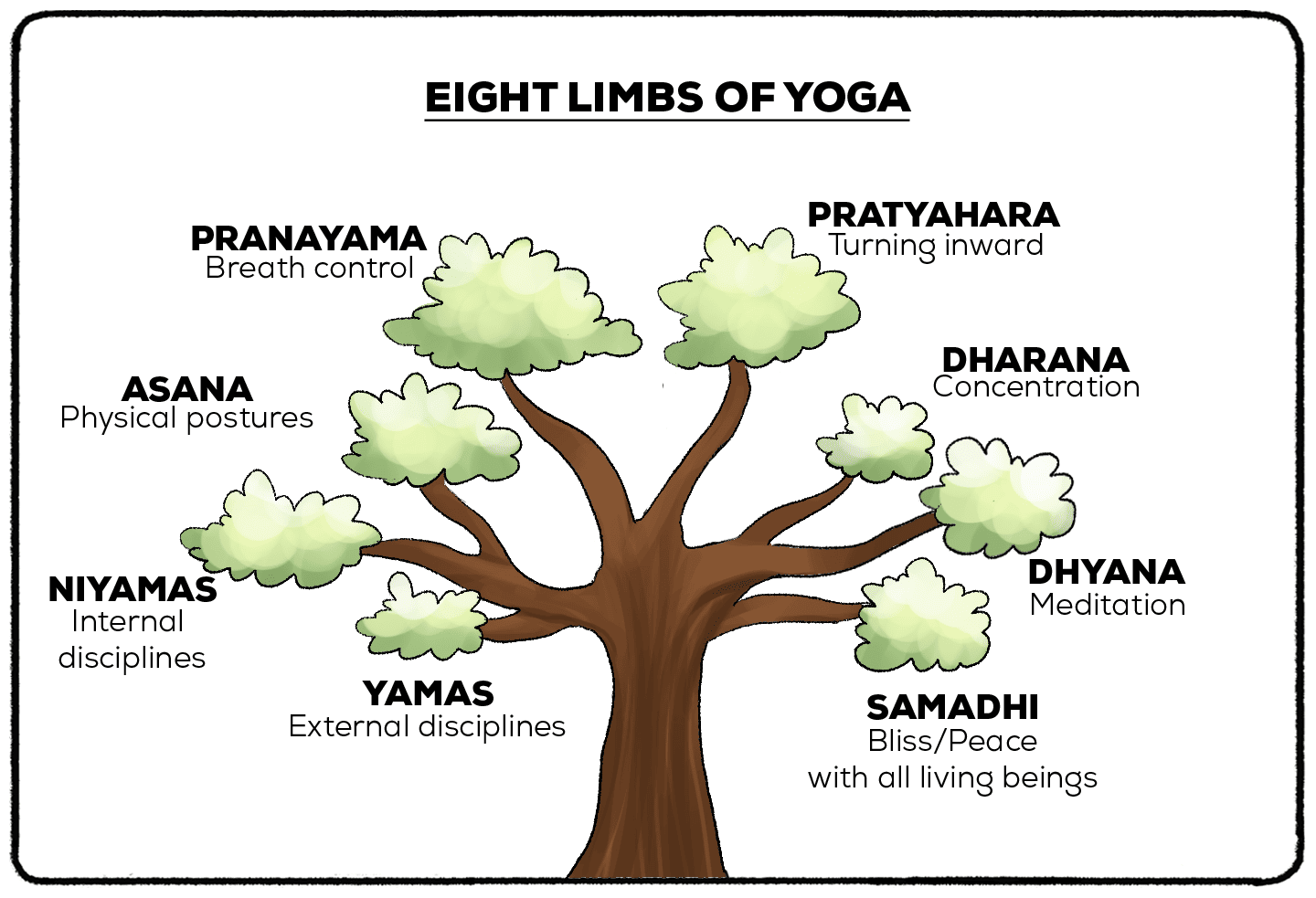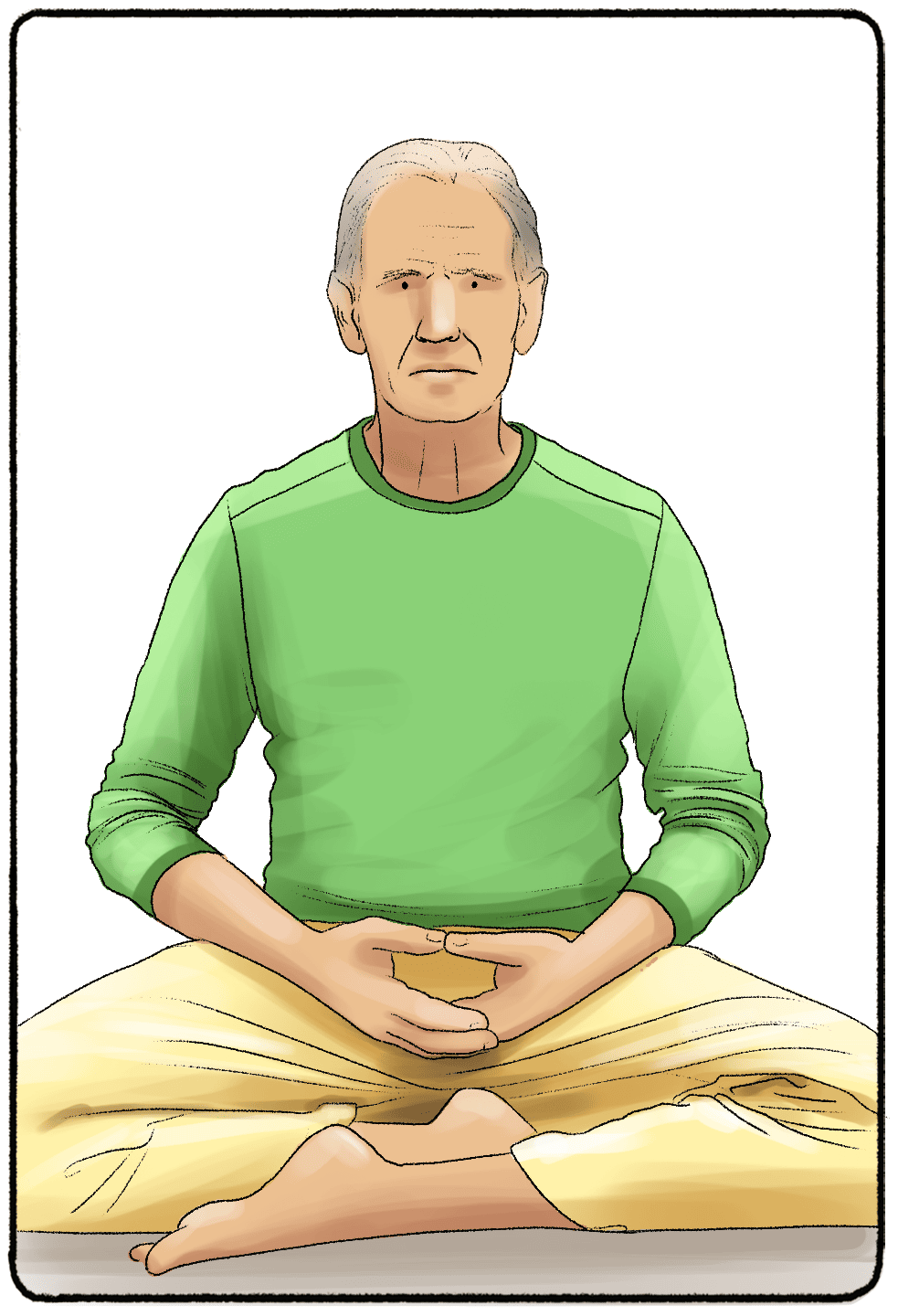When you think of meditation, what do you think of?
Maybe it’s monks sitting in a forest, levitating. Maybe it’s a bunch of people in a yoga studio, chanting. But what if I told you to picture a person just walking to work?
The practice of meditation has been written off by many as inaccessible or strange by Westerners for a long time. But mindfulness meditation has brought it into the mainstream in an unprecedented way. This isn’t just a fad. Mindfulness meditation is proven to help people decrease stress, address even physical health concerns, and improve overall quality of life. And you don’t have to take a pilgrimage to a Buddhist temple or even go to a yoga studio to bring mindfulness into your life.

What is Meditation?
Before we dive into the meditation that has gained traction in the West, let’s briefly talk about the history of meditation.
Discussions about meditation were happening all the way back in 1500 BCE. Mentions of meditation appeared in the Vedas, which are ancient Sanskrit texts. The Sanskrit name for meditation is Dhyana. Dhyana is mentioned throughout all of the most important Hindu texts, including the Upanishads and the Yoga Sutras of Patanjali.
The Yoga Sutras of Patanjali outline the “eight limbs” of the Yoga practice that is still practiced throughout the world today. The third limb is asanas, which are the poses that you may commonly associate with Yoga. Pranayama is the fourth limb - that is breathing practices that are often used in mindfulness meditations. The seventh limb is Dhyana, or meditation.

Dhyana takes a different form than mindfulness meditation or the meditations that popped up in other parts of the world. It is a meditation that focuses on a single object, area of the body, or energy source. The goal of Dhyana meditation is to find the absolute truth about what you are focusing on. It reflects the larger goals of Yoga and meditation: to cultivate self-knowledge and connect to the divine.
Dhyana is a spiritual element within Hinduism. Meanwhile, other parts of Asia were developing meditation practices that were more religious. Buddhists in India, China, and later Japan used meditation as a practice to achieve nirvana. Nirvana is a state of desiring nothing.
There are two types of Buddhist meditation. Samatha meditation quiets the mind to a point of tranquility and fixed concentration. Vipassana meditation requires more focus into what is happening in the moment, using body scans and other techniques to focus on the sensations within the body. Nowadays, Vipassana meditations are notorious for being 10-day, completely silent meditations that strip away all activities and distractions. They’re a great way to get a crash course in meditation, but they certainly don’t provide an easy transition into the world of meditation.
That’s where mindfulness comes in.
What is mindfulness?
The concept of mindfulness is quite similar to Vipassana. Jon Kabat Zinn, one of the “fathers” of mindfulness as we know it today, defines mindfulness as:
“The awareness that arises from paying attention, on purpose, in the present moment and non-judgmentally.”
There are three elements that are especially important to the of mindfulness:
- Paying attention
- On purpose
- Non-judgmentally
Paying Attention
Mindfulness is a state of being aware of what is going on around you. First, you feel the parts of your body making contact with your chair. Then, you feel the parts of your body making contact with your desk or computer. You feel a slight twinge of pain in your back and the cold air from the AC as it blows across your arm.
On Purpose
You are paying attention to all of these things on purpose. Without intention, we can easily get caught up in our minds or complete tasks on “auto-pilot.” But if you’ve seen any of my videos on how the brain processes sensory information, you can understand that a lack of focus causes us to miss a lot of things that are in front of us. You may be able to drive to your friend’s house on auto-pilot, but without intention and mindfulness, you fail to notice the beautiful hawk that flew above your car or the first signs of spring in the flowers by the highway. You need to focus, with intention, to catch all of these beautiful sights and feelings around you.
Not Judging
The last element is not judging. While you sit in a mindful meditation, you might notice that certain memories continue to come up or that you have a hard time focusing. As you mindfully move through life, you might notice that you are extra tired or feeling unhappy. It’s easy for many people to judge themselves or scold themselves for these slip-ups or moments where they aren’t feeling their best. (This is why meditation is so inaccessible for people in the first place.) But mindfulness is all about non-judgment. Did you think something negative about yourself? That’s okay. You acknowledge it - and move into the new present moment.

How to practice mindfulness meditation
Apps like Headspace and Calm have made it easier than ever for people to get into mindful meditation. But you don’t need your phone to be mindful. You don’t need an app, a training program, or even a dime to practice mindful meditation. You just need to have the desire to practice.
Mindfulness-Based Stress Reduction (MBSR) Program
In 1979, Jon Kabat Zinn developed the Mindfulness-Based Stress Reduction Program at the University of Massachusetts. The eight-week program provides instruction on how you can reduce pain and stress by increasing focus and entering a state of mindfulness more often. The program can either be taken online over the course of eight weeks or in-person over the course of five days.
In addition to the MBSR program, UMASS Medical School also Mindfulness-Based Cognitive Therapy as a way to manage depression symptoms. These two courses are still extremely popular today and have MBSR-trained teachers offering their MBSR courses online and around the world.
While many scientific studies have shown that regular meditation can have a positive impact on a wide variety of physical and mental conditions, many of these studies are small. The biggest and most trustworthy studies show the differences that mindfulness makes on patients with depression, anxiety, and chronic pain.
When you are more mindful and live in the present moment, you can enjoy your life at a higher capacity. You will be able to absorb more and learn about the world around you. You can let negative thoughts or painful memories pass by without ruminating or focusing on them for too long. You can let go of judgment.
Despite whether or not you think you would be “good” at mindful meditation, I encourage you to give it a try. Even if you don’t fully reach nirvana, you will be able to learn more about yourself and cultivate a more positive relationship with your body and mind.
